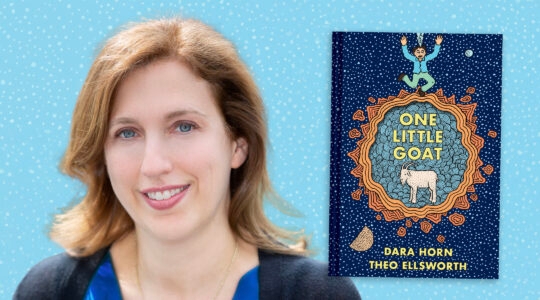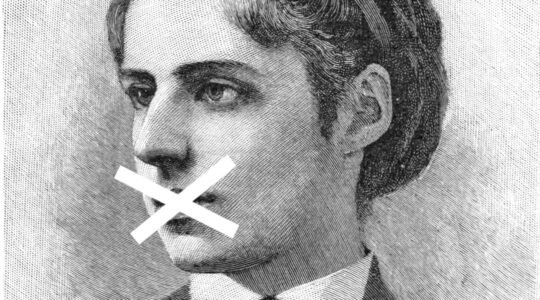When I returned recently to my alma mater, Amherst College, for my 25th reunion, I felt like a ghost. The place looked pretty much the same, but it was jarring being back, as if I were haunting the buildings and pathways where I had spent so much time, but where I no longer belonged.
I sense this whenever I visit New York, the city where I was born and where I spent my formative years, but where I left no real traces and where no one recognizes me any more on the street, making me sympathize with Mr. Cellophane in John Kander and Fred Ebb’s long-running 1975 musical, “Chicago.”
Ghosts are not a major element of Jewish tradition. Moses explicitly warns the Israelites to avoid soothsayers, sorcerers, and those who communicate with the spirits of the departed [Deuteronomy 18: 9-12]. The only mention of a Jewish ghost is when King Saul summons up the spirit of the prophet Samuel to ask his advice on how to repel the attack of the Philistines [I Samuel 28].
Nevertheless, the tension between presence and absence is a core one in Jewish life. On a spring break trip to Poland this month, my students and I walked through the streets of Warsaw, Lodz and Krakow. We glimpsed Jewish stars and Hebrew inscriptions on buildings, traces of the bustling Jewish neighborhoods that turned into ghettos that turned into graveyards, with bone and ashes mixed into the concrete used to construct the Soviet-era apartment houses. I had a drink in a bar that used to be a synagogue sanctuary, the painted wall decorations an eerie reminder of the room’s former life, as the bartender tapped vats of beer standing above him in what had been the women’s balcony.
Everywhere in Poland, I felt the presence of Jewish bodies that had vanished. Touring Auschwitz along with dozens of other tour groups that were streaming through the camp (two million people visit there each year), I fantasized that we were all, as if extras in a movie, re-enacting what it was like to be in a chaotic place with prisoners being herded in every direction.
I think about the absence of Jews whenever I hang out in neighborhoods like the Lower East Side, which has a majority Chinese-American population, the Grand Concourse in the Bronx, which is largely populated by Latino/a-Americans, and Brownsville in Brooklyn, where African- and Caribbean-Americans predominate. Do the current residents of these districts ever imagine what their neighborhoods were like when they were teeming with Yiddish-speaking Eastern European Jews — Jews who weren’t exterminated, of course, but who just moved to the suburbs?
In the Bible, God seems always to be playing hide and seek; the stock answer to the Lord’s “Where are you?” is “Here I am” (Hineni), an affirmation — of a willingness to do God’s bidding — that reverberates throughout the ages. (The word “Hineni” appears 178 times in the Hebrew Bible, but only eight times in the Torah). The title song of the late Leonard Cohen’s indelible final album, “You Want it Darker,” which was released on his 82nd birthday, includes the lyrics “Hineni, hineni/I’m ready my Lord,” which he explained in a press conference as “that declaration of readiness, no matter what the outcome; that’s a part of everyone’s soul … when the emergency becomes articulate.”
At the end of the last millennium, Harvard law professor Alan Dershowitz (who grew up Orthodox but now defines himself as secular), speculated that American Jews were literally about to disappear. In his 1998 “The Vanishing American Jew,” which was inspired by his discomfort with his son’s marrying a Roman Catholic woman, he wrote that the decline of anti-Semitism and the ease of assimilation portended doom for the Jewish people. Yet 20 years later, Jewish life is still thriving, and we do not seem to be on a precipice, despite Dershowitz’s fatalistic warning.
Last fall, I attended the funeral of Dickinson alumna Estelle Solomon, a pillar of B’nai Jacob Synagogue in Phoenixville, Pa., (just outside Philadelphia). At her funeral, Rabbi Jeffrey Sultar drew an analogy between a cooking pot and a house of worship. Just as the pot retains the flavors of all the foods that have ever been prepared in it, he observed, the walls of the shul hold traces of the prayers and songs of everyone who has ever prayed there. I can’t think of a more moving way of saying that the ghosts of our ancestors are always surrounding us, keeping us close.
Ted Merwin directs the Milton B. Asbell Center for Jewish Life at Dickinson College, where he teaches religion and Judaic studies. He writes about theater for the paper.
The New York Jewish Week brings you the stories behind the headlines, keeping you connected to Jewish life in New York. Help sustain the reporting you trust by donating today.





